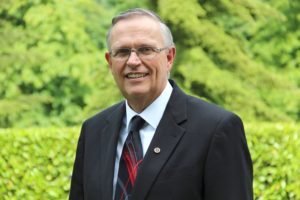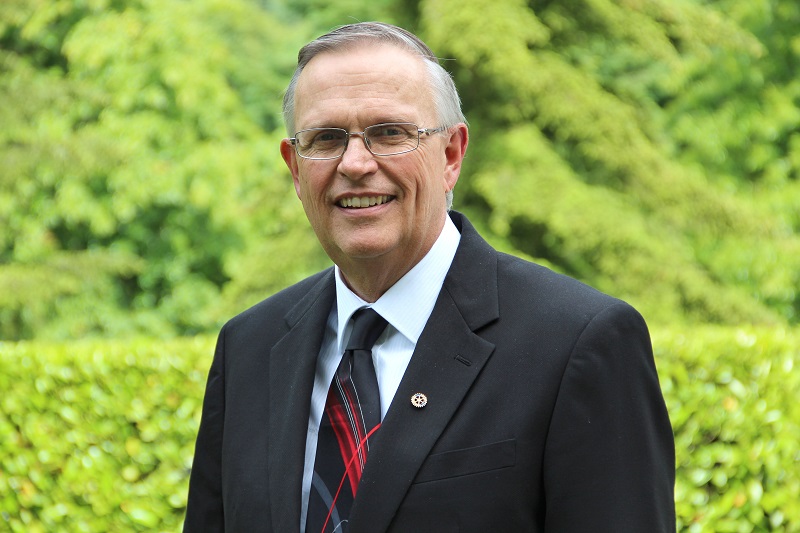The Bellevue School District (BSD) is one of the fastest-growing and most diverse school districts in King County. Over 20,000 students, who between them speak more than 80 languages, are provided with “an exemplary college preparatory education so they can succeed in college, career, and life.”
 In this interview, Dr. Tim Mills, Superintendent of Bellevue School District since summer 2012, talks about the diversity of the district and the challenges they face, and the close and strong relationship between BSD and Eastside Pathways that is benefiting the children in the community.
In this interview, Dr. Tim Mills, Superintendent of Bellevue School District since summer 2012, talks about the diversity of the district and the challenges they face, and the close and strong relationship between BSD and Eastside Pathways that is benefiting the children in the community.
Could you start by telling us how the partnership between the school district and Eastside Pathways started?
I would say that it goes back to the very beginning – when Eastside Pathways was starting its work in the community. The Eastside community has always been focused on children and families, and seen the value of and supported public education. Several organizations, including Boys and Girls Club, YMCA, Youth Eastside Services, and Bellevue LifeSpring were working with us before they partnered with Eastside Pathways.
In the last few years, we have seen the community dynamics rapidly changing and the challenges that some of our children were facing because of the changes. And we were struggling with that.
Eastside Pathways introduced us to the concept of collective impact – of bringing together organizations that support children and identifying some key areas to work on together. That was when the conversation began.
What are some of the challenges that the children are facing?
There are different ethnicities and racial diversity coming in to the community, but there is also increasing poverty and some homelessness. And the children are struggling – economically or for other reasons – and families are hurting. We have pockets within our district where children just do not have the means they need. For instance, one out of five children qualifies for free or reduced lunch.
Then we are seeing an increase in mental health issues, which is related not just to anxiety and stress about school, but also about not having consistency in their lives. Families are constantly moving – in October 2014 we had 2,000 children who were new to our district and last year that number was 2,500.
And that is a challenge. Our strength is our strong curriculum, which is designed to support a student’s ability to be successful in advanced placements when they get to high school. But the chances of success are greater if you have been with us all the way through. We are getting families that have had different instructional systems and it becomes a challenge for them to assimilate into the BSD system. And this is spread across school levels.
Let’s talk about the achievement gap.
Historically, Bellevue has been a high-performance district for students: 80 to 85% of our students meet or exceed standards. Our graduation rate of 91% is higher than the national or state average.
But there is a gap; there are students who are not at that level. And the children that we believe that as a system we are underserving are many of our Latino children, African-American children, special education children, and some of our second language learners. That’s where we are trying to focus and get them up to the high-performance level.
Sometimes it’s just life circumstances that have not allowed some children to focus on education at the level of those children who aren’t facing those challenges. Factors like poverty, mobility, and traumatic experiences have a tremendous impact on a child’s ability to learn and are the reasons for the achievement gap.
And we want to be fair and supportive – we want ”each and every student”’ to be successful. We don’t believe that a student is ”incapable”. We believe that we just haven’t made the connection with that student and what we do to support that student. We are trying to intensify our understanding of these students and how we can support them to catch up and then accelerate their learning.
That is the area where Eastside Pathways is really able to play into – helping to get organizations and communities to wrap their arms around the children and make them believe in themselves and their abilities.
How is Eastside Pathways helping to make that difference?
One of the powerful aspects of what Eastside Pathways is doing is to be that collector or that organization that is pulling groups together to share information, to gain understanding and awareness of what each is doing, to help organizations build on and support each other and get greater synergy around some of the projects. For instance, we are building on programs that the Y or the Boys and Girls Club have that can support the work we are doing.
And we’ve had some success – the attendance project, “Right place, right time, ready to learn,” is an example where we saw very quickly improved data. Another success was the 3rdgrade reading challenge. It focuses on getting our children 100% reading by the end of 3rd grade. Eastside Pathways helped us by leveraging partners’ strength. One example is how we partnered with the Y for their summer program, “Reading Rangers.”
Eastside Pathways is really informing the community and keeping us connected. It is helping us share in the mission of working together for the benefit of children.
How do you see this relationship evolving?
It’s a dynamic relationship. It’s about adapting and adjusting to the needs of kids and the community. We have ongoing conversations and discussions. Eastside Pathways has collaboratives that work in different areas, and the Mental Health and Wellbeing Collaborative grew out of conversations about what we were seeing in that area.
We now have a process and partners that Eastside Pathways has assembled. And I think that is truly their value – to have this incredible network of people who recognize that there is tremendous talent and strength in all these organizations and that they are committed to children in the community.
Our relationship will continue to move to where the need is and that is very important. It has to be adaptive and connected so that we have a better chance of succeeding in supporting the kids.
Dr. Tim Mills was interviewed by Sujata Agrawal, communications strategist and storyteller, and volunteer writer for Eastside Pathways
Photo courtesy of the Bellevue School District

